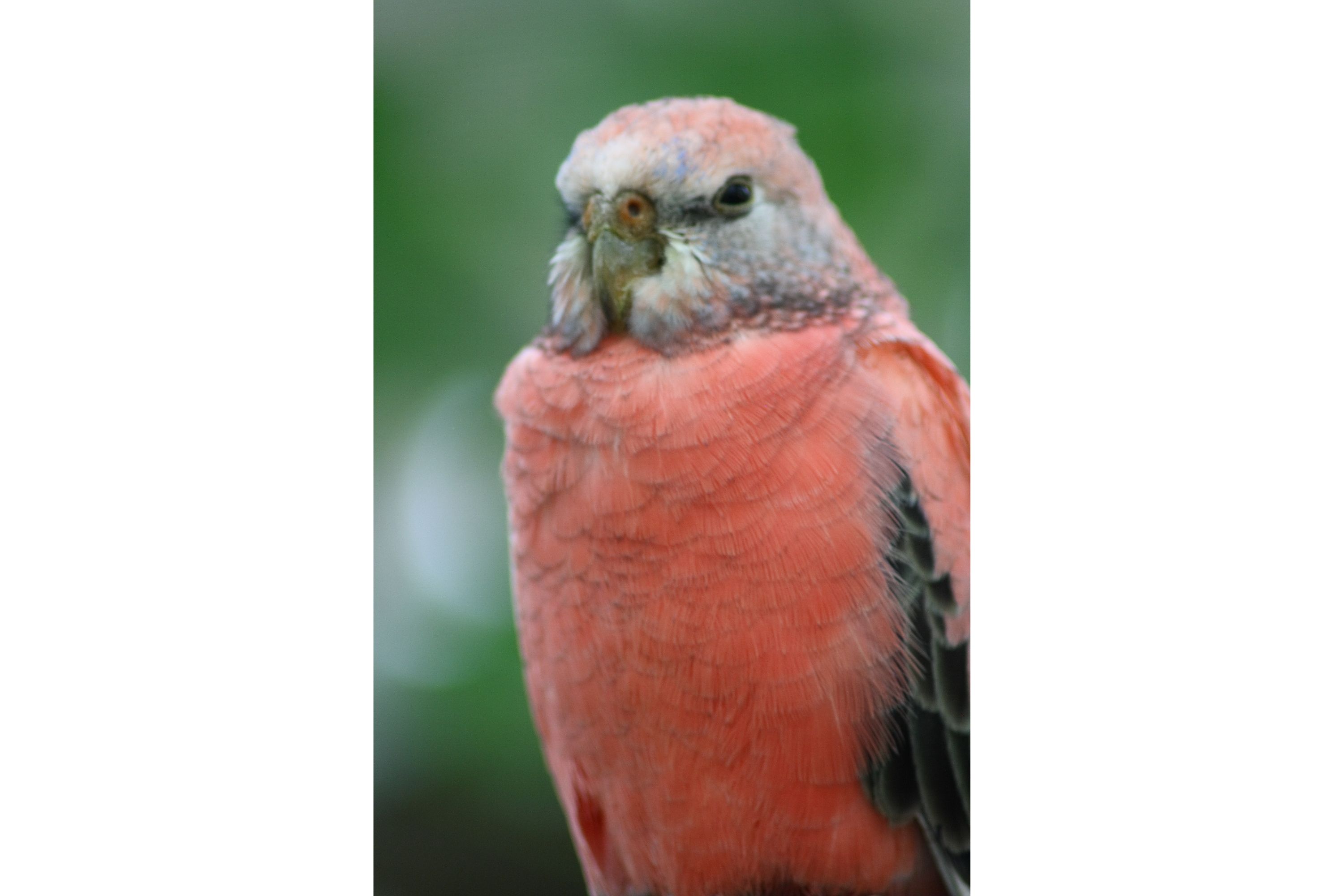Bourke's parrot
(Neopsephotus bourkii)

Description
Bourke's parrot (Neopsephotus bourkii, formerly known as Neophema bourkii), also known as the blue-vented parrot, sundown parrot, pink-bellied parrot, Bourke's parakeet, Bourke or "Bourkie", is a small parrot found in Australia and the only species in its genus, Neopsephotus. It is approximately 19 cm long and weighs around 45 grams. It is named after General Sir Richard Bourke, Governor of New South Wales from 1831 to 1837. The Bourke's parrot is a relatively small species. They tend to vary between 18 cm and 23 cm in length with a tail length of approximately 9 cm. The females of the species tend to be slightly smaller than the males: males of the species weigh between 47 g and 49 g whilst females weigh between 41 g and 49 g. Both sexes look very similar until the age of nine months, after which they come into full plumage colour. In the wild, Bourke's parakeets display an overall brown colouration with a pink abdomen, pinkish breast and a blue rump. The legs are dark-brown, with zygodactyl toes. The bill is yellowish-brown. The adult male has a blue forehead while the adult female has a little or no blue on the forehead. The Bourke's parrot's feathers help it blend in with the reddish soil of its arid home. There are four documented mutations found in captive Bourke's parrots; yellow, Isabel, fallow and pink or rosa. The bird's call has been described as a "soft twitter". Other sounds made by the Bourke's parrot go "chu-vee", "chirrup chirrup", or when alarmed, "kik-kik-kik". The Bourke's parrot is native to Australia. As a nomadic species, following water and food sources, it has a vast range. The Bourke's parrot is mainly found in sparsely populated areas; however they have been known to dwell in urban areas as well. These parrots can be found from the South-western parts of Queensland deep into western New South Wales, throughout Central Australia to the far northern parts of South Australia and parts of Western Australia. The Bourke's parrot's main habitat consists of areas dominated by Acacia species, particularly the mulga, in dry spinifex plains. The species can also be found in native cypress and other open eucalypt woodlands.
Taxonomic tree:







